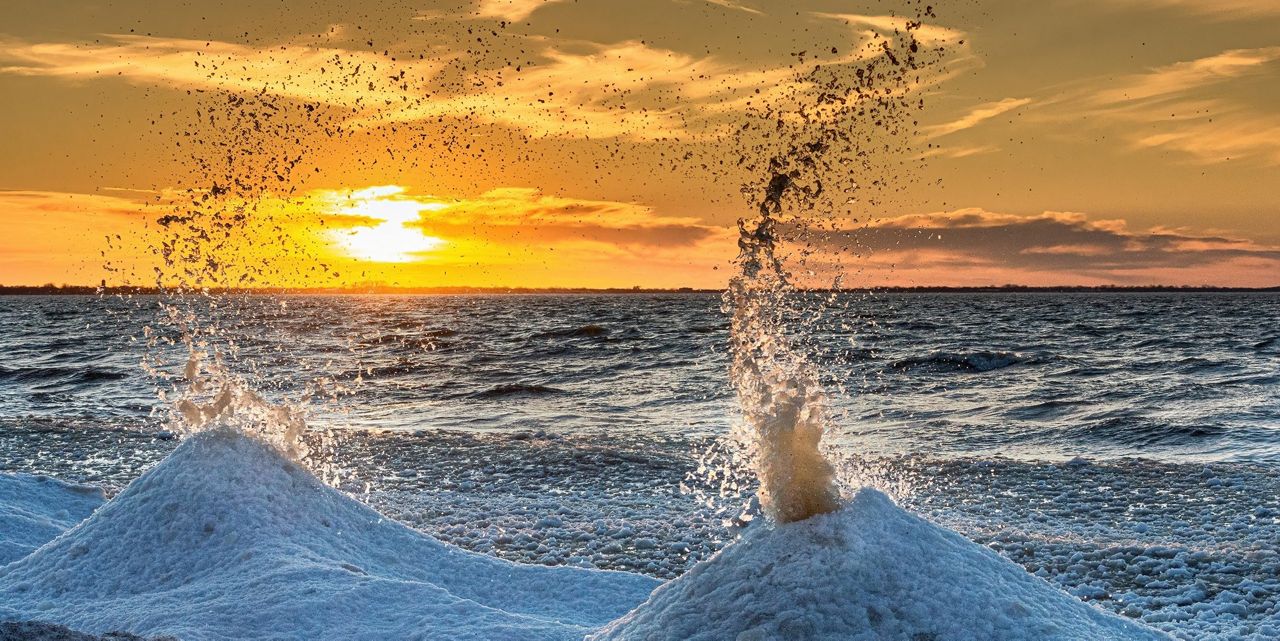
Have you ever seen something like this?
On Sunday, the National Weather Service in Grand Rapids captured pictures of 'Ice Volcanoes' near Oval Beach on the eastern shores of Lake Michigan. Don't worry, there is no lava involved! An ice volcano is a conical mound of ice formed over a terrestrial lake via the eruption of water and slush through an ice shelf. The process is wave-driven, with wind providing the energy for the waves to cut through the ice and form the volcanoes. Ice volcanoes commonly occur during the winter months along the shores of the Great Lakes. Cones begin to form at the leading edge of the ice shelf as it builds out into the lake. When the waves, driven by strong onshore winds, feel bottom they build and break onto the ice shelf. After the ice shelf has built out, waves continue to travel underneath the ice and are forced up through cracks and previously formed cones.
For ice volcanoes to form, it needs to stay cold enough to keep the ice around, and waves need to be large enough to force water upwards against the ice shelf.
Ice volcanoes can be dangerous, especially when people climb on them. There may be no way to get out of the icy water if someone slips down the side of one of the mounds.
(NOTE: Video included is from January 2016 taken by Wide World of Trains / Youtube)




